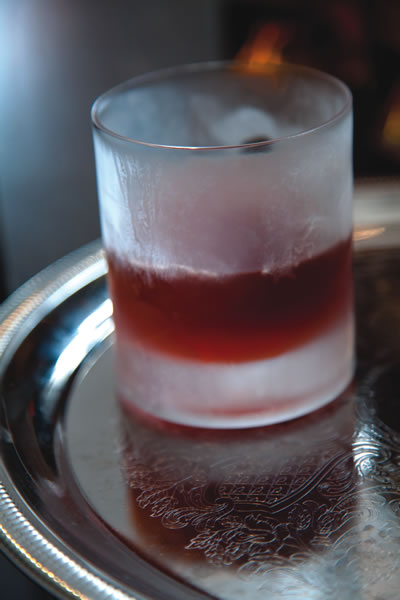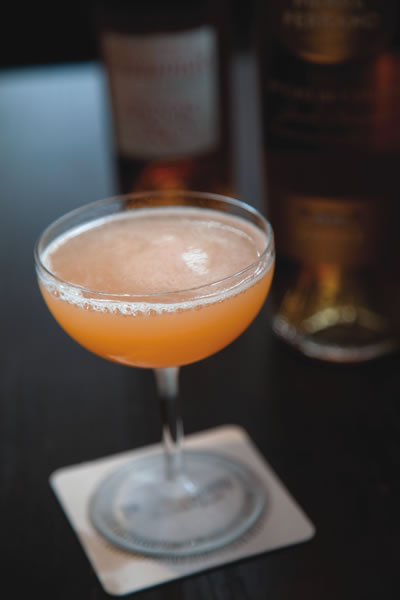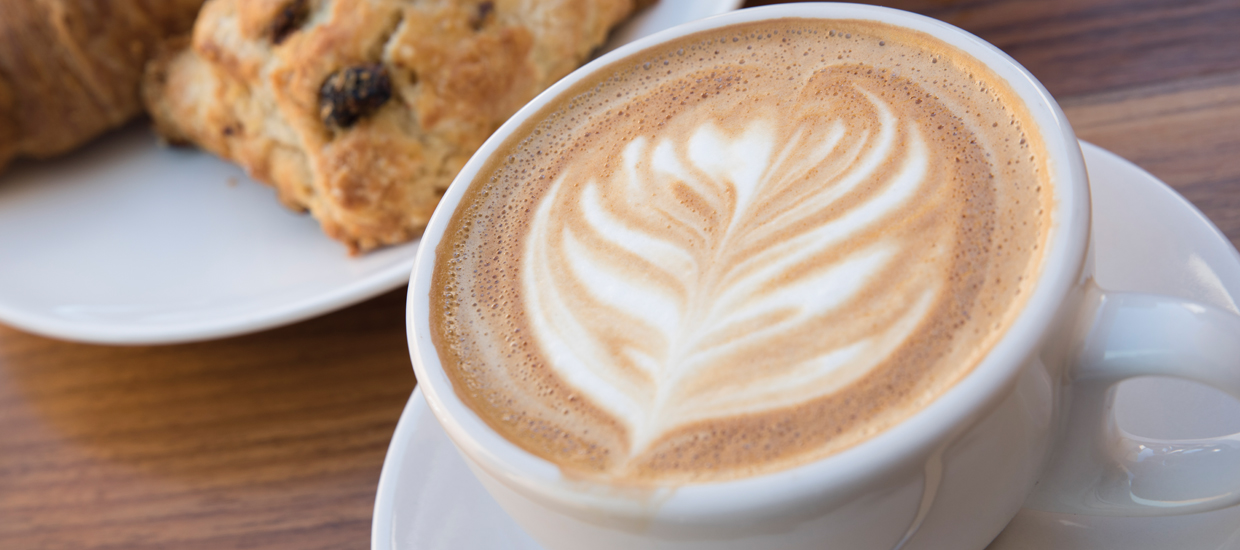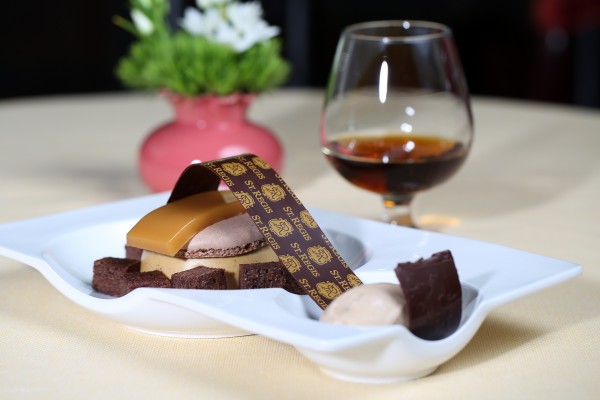The legendary spirit, whether served neat or in a cocktail, keeps getting better with age.
Section by Michelle Franzen Martin
Photos by Matthew Guillory
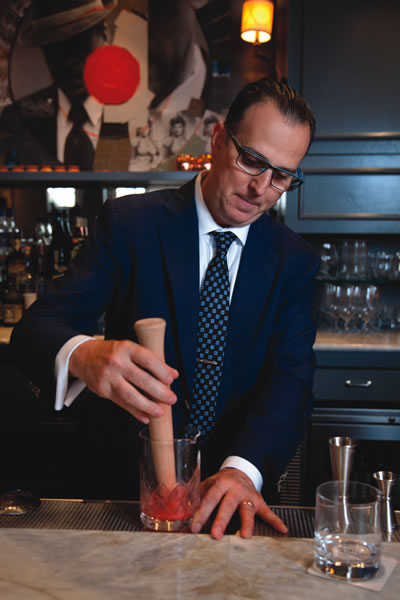 The French town of Cognac—and its surrounding viticultural areas—has long been a place of intrigue. Although the climate of the region is considered perfect for producing high-quality wines, Cognac’s chalky soils harvest grapes that are far from ideal—but are perfect for distillation. This seeming paradox led to the creation of Cognac’s legendary spirit hundreds of years ago.
The French town of Cognac—and its surrounding viticultural areas—has long been a place of intrigue. Although the climate of the region is considered perfect for producing high-quality wines, Cognac’s chalky soils harvest grapes that are far from ideal—but are perfect for distillation. This seeming paradox led to the creation of Cognac’s legendary spirit hundreds of years ago.
Cognac producers use the traditional method of pot stills with open flames, a process that intensifies the spirit’s unique texture and flavor.
“The extremely high temperatures in the first few seconds of the distillation create a response,” says Jackson Cannon, mixologist and co-owner of The Hawthorne, an upscale cocktail den in Boston. “The difference is in the weight, the texture and the mouthfeel.”
Mixologist Griffin Elliott of Sepia, a Michelin-starred restaurant in Chicago, says a lot goes into making a great cognac. “With skill, passion and allowing an aging period in French oak, distillers and blenders are able to create the world’s finest spirit,” he explains.
The viticultural areas of Grande Champagne and Petite Champagne are regarded for producing the highest-quality cognac. The areas’ soft, chalky soil often leaves a “delightful coating or chalkiness” in the mouth, Cannon says. Like wine drinkers, those who evaluate cognac weigh many of the same attributes—color, scent (cognac always should be smelled when one’s mouth is open) and taste.
“The overarching word is balance,” Cannon says. “When the cognac matures, it shows classic fruit notes of apricot, apple, pear, plum and vanilla, and sometimes has notes of coffee or tobacco.”
Cognac is the perfect drink for winter, mixologists say, as it can enjoyed be in a cocktail or on its own. “As a fruit-based spirit, cognac connotes harvest and ripeness, which are reassuring winter qualities,” explains mixologist Mayur Subbarao of Louro in New York City. “It also provides a pleasant counterpoint to deeper flavors such as cinnamon, bitter orange and chocolate.”
Subbarao likes to mix cognac in his signature cocktail, The Passageway, which combines the spirit with bourbon, Cynar and Amere Nouvelle liqueur, a French-style orange bitter.
The Cognac region is home to a variety of producers, ranging from major houses such as Martell and Rémy Martin to small single estates. One of Cannon’s favorites is Ferrand, which uses grapes from Cognac’s best region, Grande Champagne, and employs old-style methods to produce traditional cognac. But he also likes Leopold Gourmel, a small producer that creates more unusual varieties, which he describes as “wild and experimental.”
A few of Subbarao’s favorites include small production houses Paul Beau, Delamain and Jean Fillioux. “They have character and elegance,” he says. “They are more unique in their character, and harder to find, perhaps, but worth seeking out.”
Whether it’s from a small house or a large producer, stirred in a cocktail or served straight up, there are plenty of ways to enjoy cognac this winter—and countless reasons to drink it.
“It brings warmth to your body on cold winter nights,” Elliott says. “There are not many better things than swirling some fine cognac in a snifter and watching the snow fall with friends and family.”
Mix it Up
These cocktails blend cognac with other alcohols and bitters to create memorable concoctions.
The Sazerac
Born in New Orleans, the Sazerac originally was cognac-based. “It later morphed into a whiskey drink, with the whiskey coming from Mississippi,” says Jackson Cannon, mixologist and co-owner of The Hawthorne in Boston. Blending cognac, absinthe and Peychaud’s bitters, the Sazerac is known for its mixing technique. It starts with two chilled glasses, one of which is swirled with absinthe, a high-alcohol spirit. The second glass is used to mix the remaining ingredients, which are then added to the first glass. “For mixologists, the Sazerac has become the patron saint of New Orleans,” Cannon says. “It is absolutely magical with cognac. Even the name Sazerac probably was derived from the word cognac.”
Vieux Carre
The Vieux Carre, which shares its name with the French word for New Orleans’ French Quarter, is believed to have been invented there in the 1930s. “The Vieux Carre is full-bodied and boozy,” Chicago mixologist Griffin Elliott says of the drink, which combines cognac with rye whiskey, sweet vermouth and Benedictine, Peychaud’s and Angostura bitters, and is garnished with lemon. It’s often regarded as a sophisticated version of the Manhattan, with two parts spirit for one part vermouth. “It’s really one of the best cocktails ever created,” Cannon says, “with French-American and Italian ingredients all in one glass.”
Champs-Elysees
Lighter and more refreshing than the Vieux Carre, but equally as delicious, the Champs-Elysees is another cocktail favorite that uses cognac. “It’s the perfect sour,” Cannon says. “The drink’s complex woodiness is balanced by chartreuse, lemon and bitters.” A variation of the sidecar, the Champs-Elysees mixes cognac with chartreuse, a French liqueur, as well as lemon juice, simple syrup and Angostura bitters. “Everyone talks about the sidecar, but this is the next level of sophistication and much more interesting,” Cannon says. “The chartreuse gets between the cognac and lemon juice and attaches to all of these flavors, helping to show the cognac in a fascinating light.”



